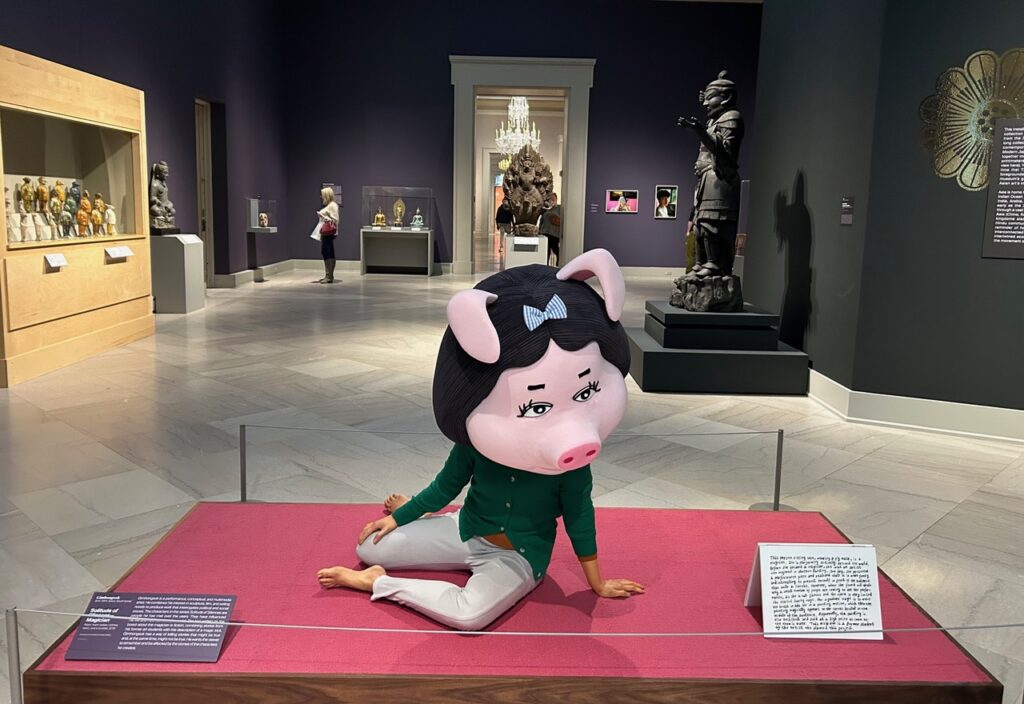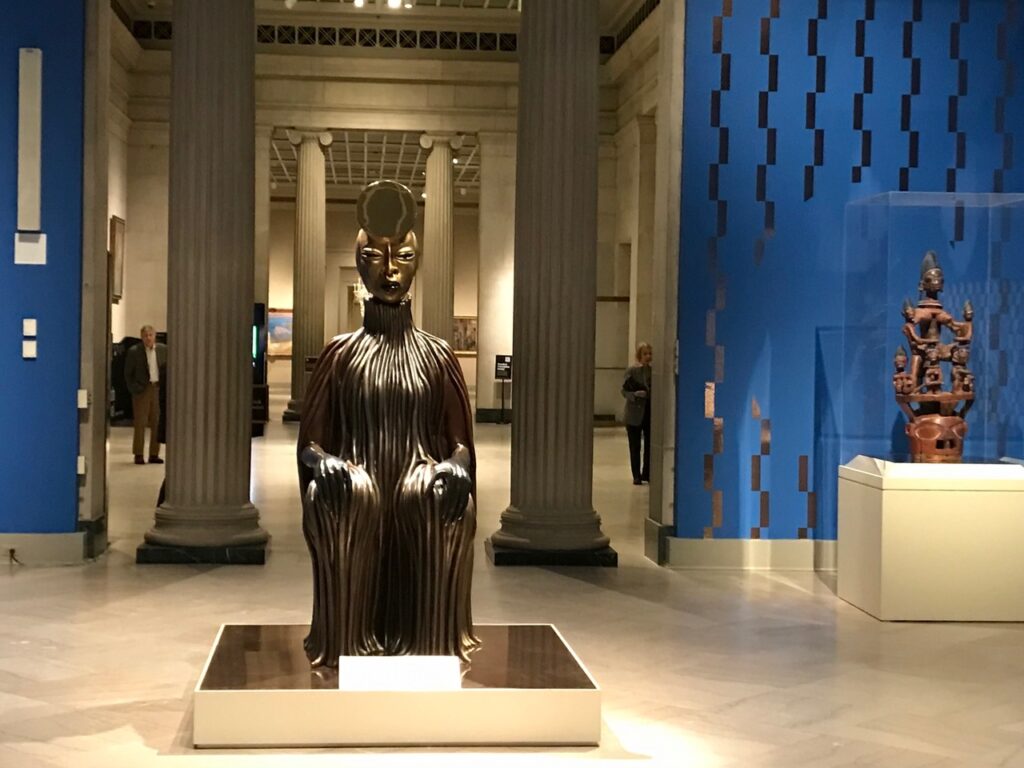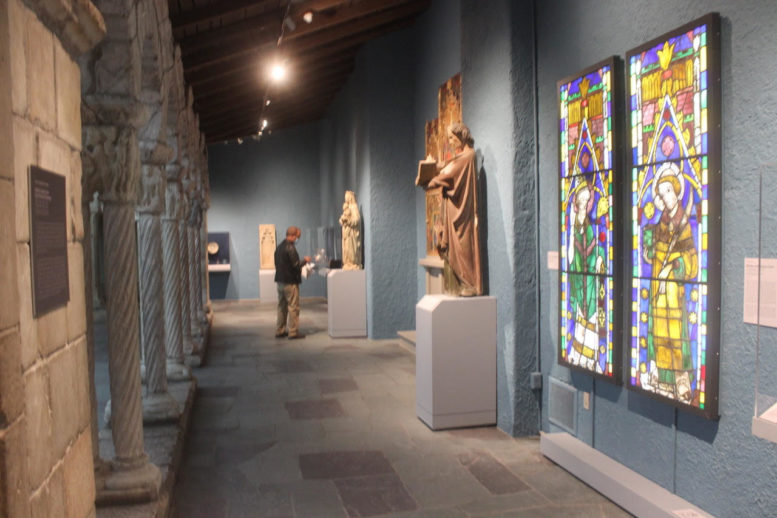By DAVID DUPONT
BG Independent News
Big changes are coming to the Toledo Museum of Art, though nothing that should come as a surprise for those who’ve been paying attention what’s happening at the museum.
The museum announced this morning (11-14-24) that it has chosen Michael Maltzan Architecture, Once-Future Office and Studio Zewde as the design partners for a comprehensive reinstallation of the museum’s galleries.
The museum announced that this will be “the first holistic reinterpretation of TMA’s presentation since the late Roger Mandle’s directorship in the 1980s.”
Construction is expected to start next year. While some galleries will be closed as the work progresses, the museum will remain open.
The project aims to both reimagine the story of the art in the collection and how that story is communicated to visitors. This reflects a shift in approach to broaden the focus of art from a Western European centric view to a more global perspective.

That was evident when the museum refurbished one of its most cherished spaces, the Cloister in 2021.
[RELATED: Toledo Museum reopens Cloister with a brighter, broader, more inclusive view]
The space that evokes a Medieval monastery now included works from Islam, Africa, and the Middle East that were connected to what was happening in Europe.
That global perspective was evident in a number, though not all, special exhibits.
The newest “Strategic Interplay: African Art and Imagery in Black and White” celebrates the connections between Western art and African Art seen through the lens of chess.
[RELATED: The game’s afoot: Toledo Museum celebrates the ‘Strategic Interplay’ between chess & African art]
According to the museum’s announcement: “The reinstallation will provide a chronological journey through art history, guiding visitors from antiquity to the present day, tracing the cultural connections between geographies that the current galleries understate. The new presentation will showcase a fuller breadth of human cultural creativity, telling both a more accurate and inclusive history.”

The statement continued: “Since 2020, TMA has doubled its acquisition resources and quadrupled its curatorial team, positioning the museum to undertake this innovative project. The reinstallation will encompass every space on the museum’s campus, including the Edward B. Green Building, the SANAA Glass Pavilion and the Georgia and David K. Welles Sculpture Garden.”
“The Toledo Museum of Art is well positioned to do something distinguished with our reinstallation,” said Adam Levine, Edward Drummond and Florence Scott Libbey president, director and CEO at TMA. “We have a collection that spans 6,000 years and six continents, an expanded and unified curatorial department, and a strong foundation of community outreach and engagement. We are a big museum, embedded in our community, but not too big to be siloed, allowing us to tell a truly global art history that showcases the depth and breadth of connections across cultures. Our visitors will see their histories on display.”
This shift in emphasis reflects both a global perspective but also better connects the museum to its ethnically diverse neighborhood in Toledo’s Old West End.
Expanding its collection is part of telling this new story. Levine said that the museum has the resources through its trusts, donations, and the careful selling of pieces.
This is not without controversy. In 2022 the museum “ deaccessioned” three paintings — Paul Cézanne’s Clairière (The Glade); Henri Matisse’s Fleurs (Flowers); and Pierre-Auguste Renoir’s Nu s’essuyant (The Bather).
[RELATED: Toledo Museum of Art putting three paintings by Impressionist masters on the auction block]
The move drew scathing criticism locally and nationally. The Sotheby’s auction also earned the museum a reported $51.2 million to use to purchase new work.
And Levine and the museum have started to use auction guarantees, an innovative technique when seeking to purchase work.
The museum identifies works it wishes to purchase, and after doing its due diligence checking the work, it gives the auction house a guaranteed bid that it will pay when the work goes on the auction block. If no one bids more than that guarantee, Toledo gets a new piece for its collection. If the museum is outbid, it gets a cut of the amount the price exceeded its guarantee. That’s money that can be used to buy new art.
The new galleries will be updated to better showcase both the new and old works in the collection, including employing innovative technology.
“These enhancements, along with essential facility upgrades such as restrooms and upgraded heating, ventilation, and air conditioning (HVAC), will significantly elevate the visitor experience,” the museum press release stated.
The design phase is underway, and museum plans to share designs with the public in 2025. The project is expected to be completed in 2027.

